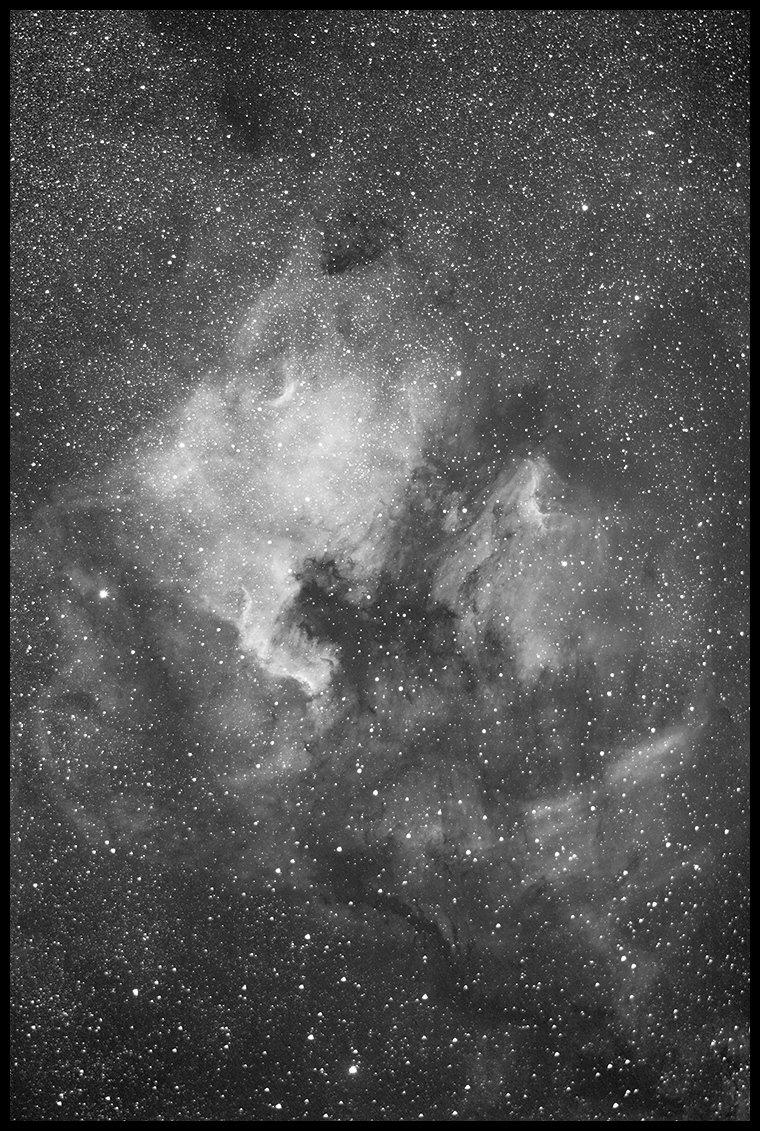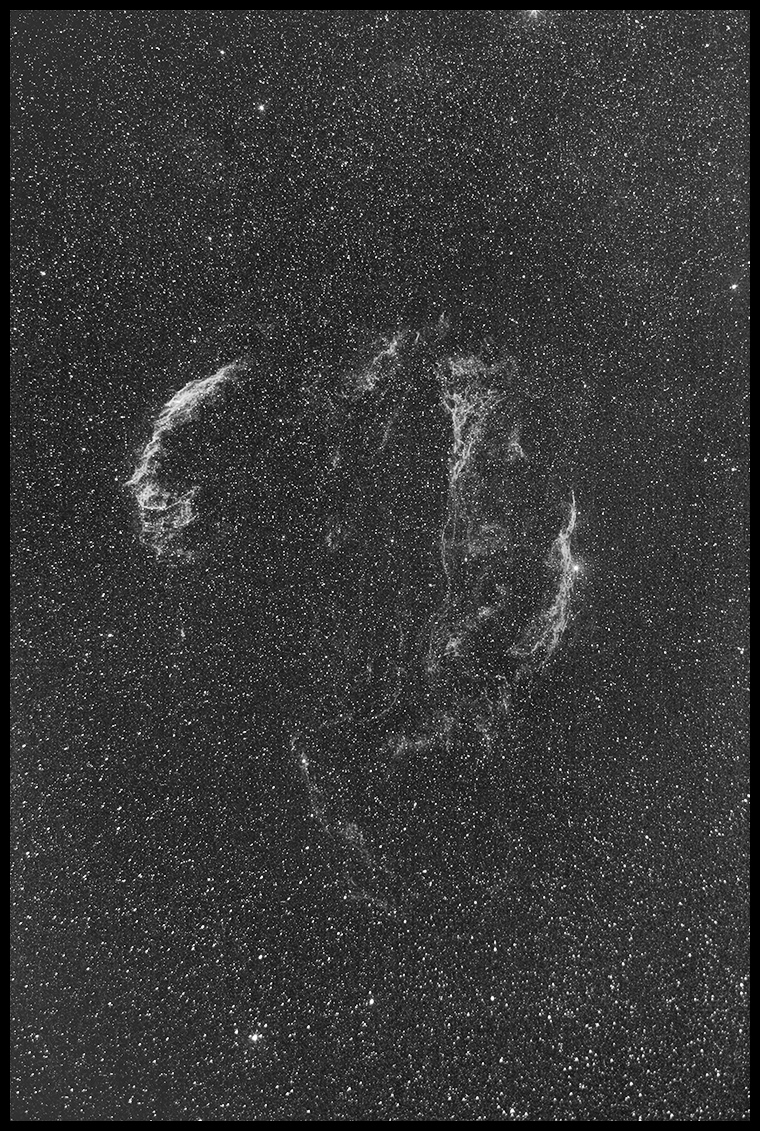10/23/2013. Two big fields in Cygnus had my attention tonight. I wanted to try three changes to the DSLR workflow: longer sub-exposures, dark frames, and reducing the aperture for better star images. I shot NGC 7000 with 5-minute (300s) subs at the same aperture as before (~F2.4). Tracking is still spot on, but when shooting 300s subs, dark frames are much more important than with shorter subs (where they would still matter). On this coolish night (40°F dropping to 31°F by dawn), I took eight darks immediately after the night's light frames and averaged them into a master dark. I shot twilight flats, too, but they did more harm than good. Tonight was not a sparkler — the Milky Way was nowhere to be seen. I verified focus on Vega but made no adjustment. The images below are reduced for the web but not cropped, not even a little:

NGC 7000
29x300s (2h45m) w/8x300s darks (40F)
200mm 2.0 Nikkor @ ~F2.4
12nm Astronomik H-a filter
Canon 50D-HG iso 1600

The Veil Nebula Complex
9x300s (45m) w/8x300s darks (40F)
200mm 2.0 Nikkor @ F2.8
12nm Astronomik H-a filter
Canon 50D-HG iso 1600
The profusion of stars in this rich part of the Milky Way makes the fainter tendrils of the Veil hard to see. I experimented with AstroAnarchy's star removal action but couldn't get it work with PhotoShop CS4, either 32- or 64-bit. In the process, I remembered that PixInsight has excellent starmasking tools. By making a star mask and selectively working with masked and inverse-masked images, it's a snap to selectively enhance the nebulae while de-emphasizing stars or at least refraining from bloating them while histogram stretching extended subjects. Here's a first cut. Take the same stacked output from Maxim and use PixInsight where star masks allow me to treat the histograms of stars and everything else separately:

Promising! People, it's only a 45 minute exposure.
10/25/2013. Here's four hours:

The Veil Nebula Complex (cropped)
48x300s (4hr) w/7x300s darks (30F)
200mm 2.0 Nikkor @ F2.8
12nm Astronomik H-a filter
Canon 50D-HG iso 1600
Except where noted, deep-sky photos are made with an SBIG ST2000XM CCD behind a 10-inch Astro-Tech Ritchey-Chretien carried on an Astro-Physics Mach1GTO. The CCD is equipped with Baader LRGB and 7nm H-a filters. The internal guide chip of the CCD most often keeps the OTA pointed in the right direction (I'll let you know when a Meade DSI and a separate OAG or guidescope takes its place). Camera control and guiding are handled by Maxim DL 5.12. The stock focuser on the AT10RC has been augmented with Robofocus 3.0.9 using adapters turned on the lathe downstairs. Maxim performs image calibration, alignment, and stacking; Photoshop CS4 and FocusMagic 3.0.2 take it from there. Gradient Xterminator by Russell Croman and Astronomy Tools by Noel Carboni see their share of work, too. Beginning in May 2013, PixInsight has taken over some of the heavy lifting for transfer function modification and deconvolution.
:: top ::